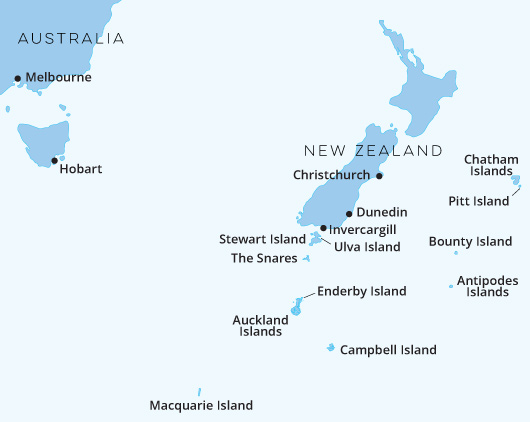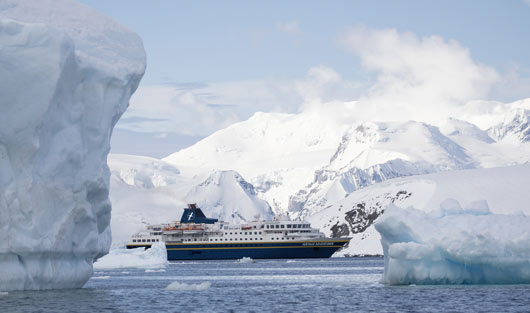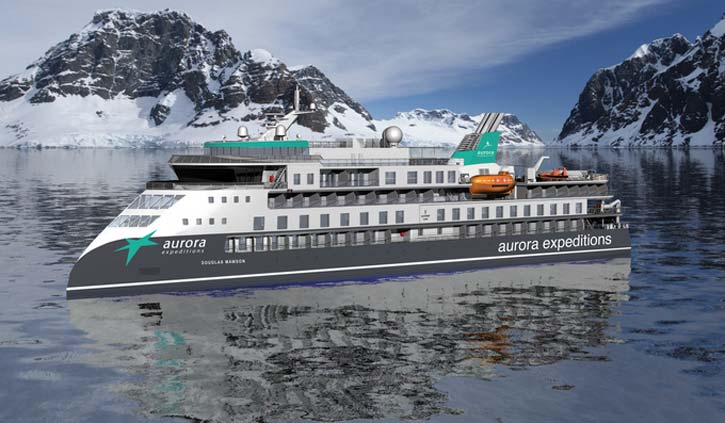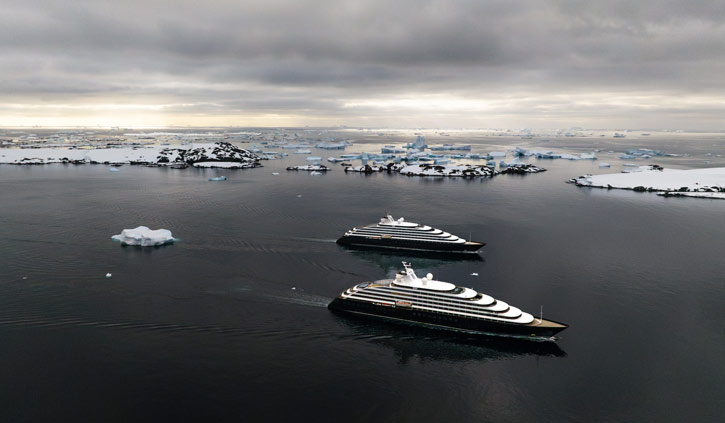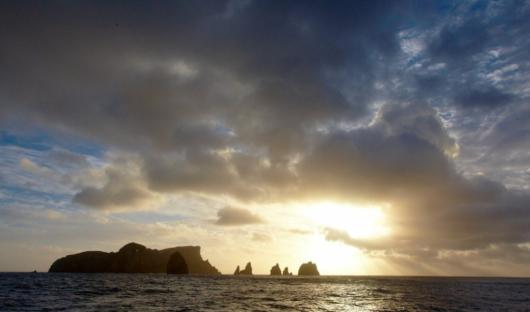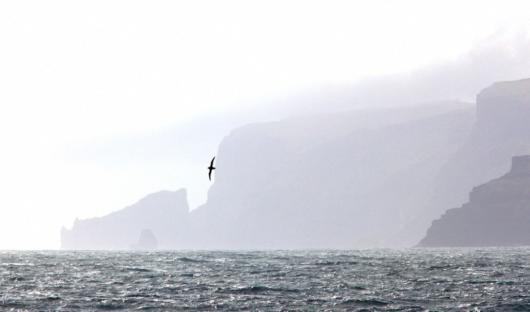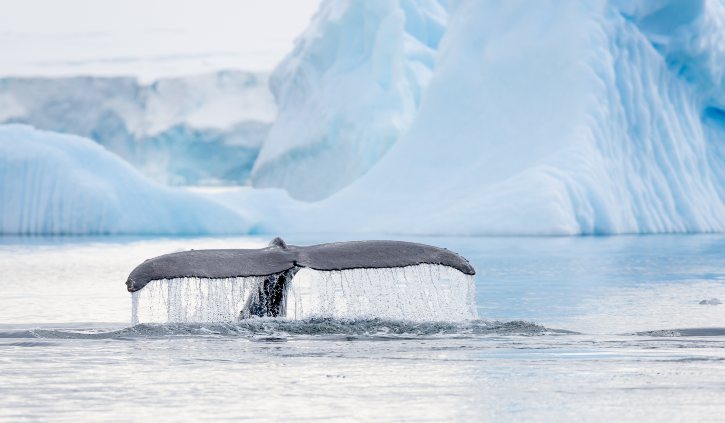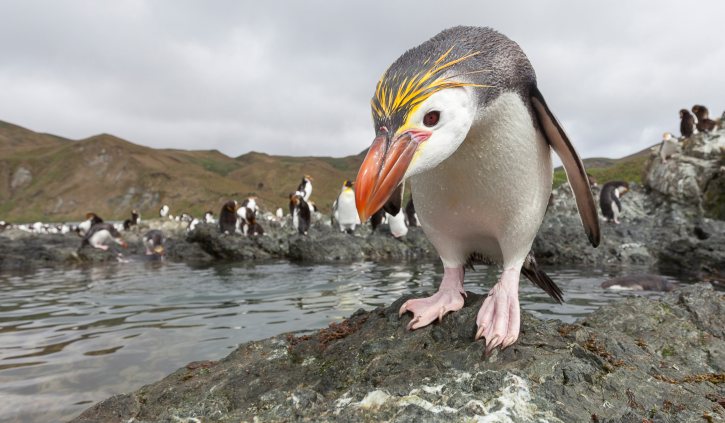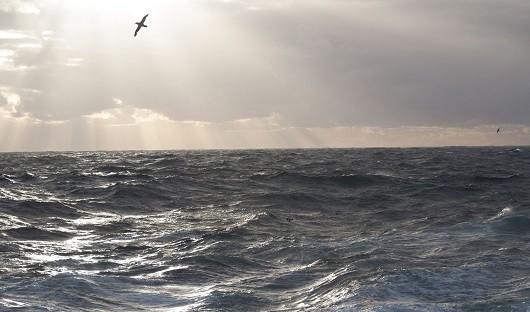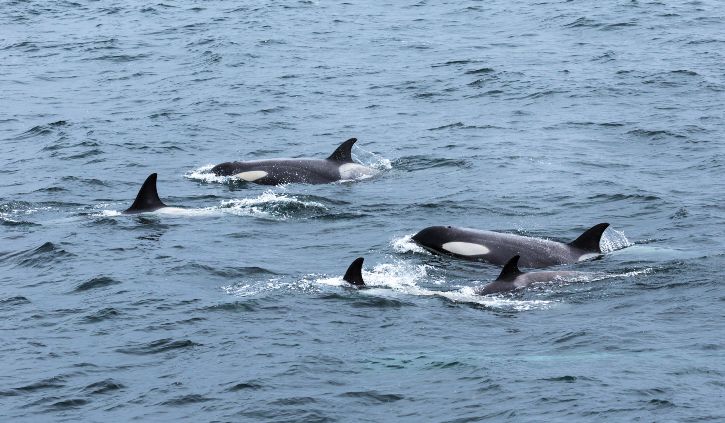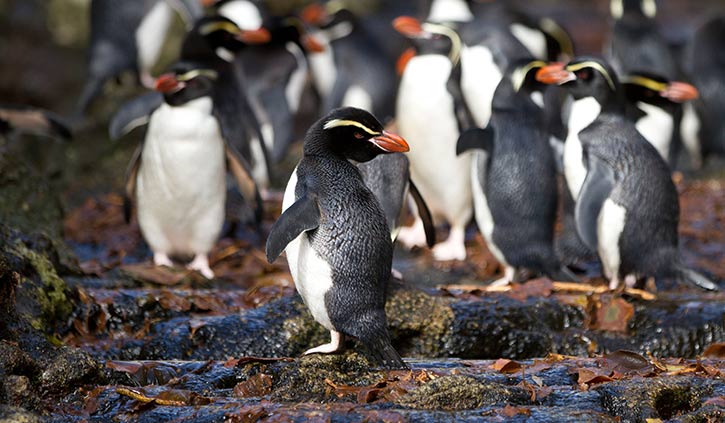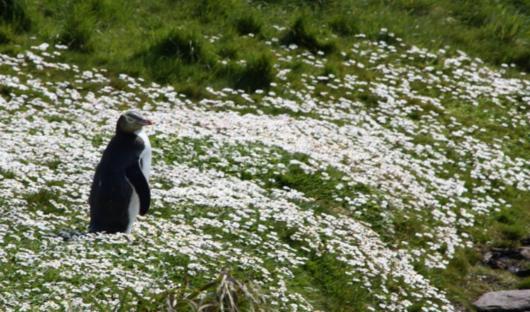
Sub Antarctic Islands
NEW ZEALAND & AUSTRALIA
Located in the remote southern ocean (south of New Zealand) lie the untouched, rugged and wild paradise of Australia’s and New Zealand’s Sub Antarctic Islands. Commonly referred to as the ‘Galapagos of the Southern Ocean’ from the moment you set foot on the first island, it won’t take you long to realise why. Often overlooked or forgotten as a cruising destination, these islands are home to an abundance of wildlife – some not found anywhere else in the world along with an eccentric combination of flora and fauna.
Drop anchor near Campbell Island, where Southern Right Whales come to calve and Campbell Island Shags and Light-mantled Sooty Albatross roam the skies. Experience the abundance of wildlife on Macquarie Island, home to thousands of seals and millions of penguins along with many species of birds, plants and invertebrates found no where else in the world. Have the privilege of exploring the strictly regulated New Zealand Sub Antarctic islands and their surrounding waters which have the highest level of protection of conservation status from the New Zealand government. The area is considered to be “bird central” by top ornithologists from around the world.
What seem to be just specks of land in the Southern Ocean are all deemed UNESCO World Heritage sites and protected by both Australia and New Zealand for their committed wildlife refuges. These islands can be visited on board a cruise just on their own or on the way to the Ross Sea region of Antarctica. There is a strict management plan for the conservation and protection of the islands, which restricts the number of people allowed on shore each year. If you set foot on one of these wild islands know that you are one of the lucky few for the season. Contact us today to find out how you can visit these rugged and untouched wildlife and environmental sanctuaries.
HIGHLIGHTS
Abundance of Bird-life
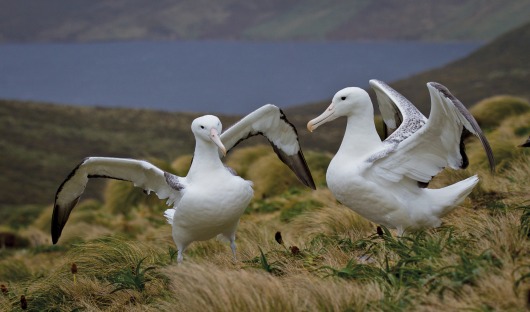
Bird lovers are in for a real treat with the islands contending for the ‘seabird capital of the world’. There have been 40 types of seabirds recorded as breeding across the islands and over 120 observed. When breeding season is in full swing, millions of birds find their way to the islands. A minimum of 15 bird species on the islands are found no where else on earth and some species have survived in the Sub Antarctic region after predators had entirely wiped them out from the mainland of New Zealand. There have been ten species of penguins recorded throughout the islands, with four of them confirmed as breeding there, including the yellow-eyed penguin and three species of crested penguins.
Out of the worlds populations of petrels, shearwater, fulmars and prions- 30% of them breed on the land of New Zealand’s Sub Antarctic islands. 10 of the world’s 22 species of Albatross occupy the islands, including three different great albatrosses which can have a wing span of over 3.3 metres. Each of the cormorants found in the area are endemic to their own island group. Most notably the Bounty Island shag, the rarest of all cormorants with a population of less than 600.
Plethora of Wildlife
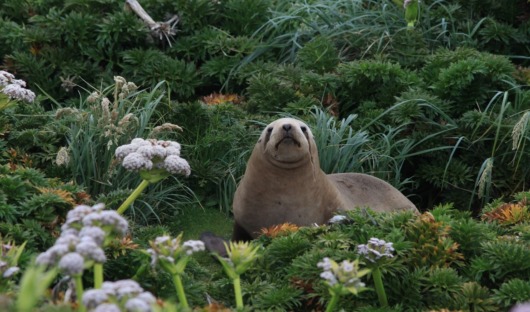
The wildilfe extravaganza doesn’t stop with just birds- the New Zealand sea lion’s populate Auckland Island and are considered one of the rarest seal lion species in the world and as they can only be found in the New Zealand region. Fur Seals, after almost being wiped out of the area by sealers in the 19th century have increased their population to more than 50,000 throughout the islands. Both the Southern elephant seal and Leopard seal are frequent visitors to the islands along with southern right whales swimming throughout the islands surrounding waters.
Macquarie Island
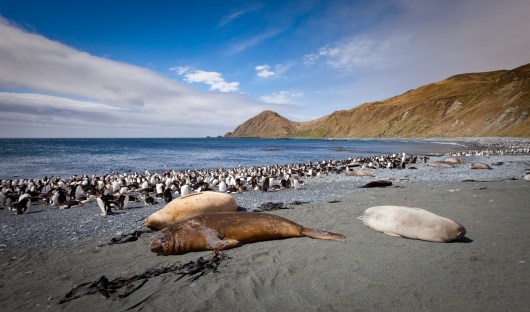
Situated half way between Australia and New Zealand, Macquarie Island is a place which has outstanding geological and natural significance on a world-wide scale. The importance of this beautiful Island was realised early on, being proclaimed a wildlife sanctuary back in 1933. What makes Macquarie Island so geologically unique is the fact that it is the only place on Earth where the rock that forms the island has been pushed up from the ocean floor to its 3000 metre tall standing today. The island is 34 kilometres long and 5 kilometres at it’s widest point, making it somewhat cramped for all of it’s chatty residents. Approximately 3.5 million seabirds arrive each year accompanied by around 80,000 elephant seals. The island is home to 100,000 breeding pairs of King Penguins, making it the third largest colony in the world. There are also the endemic royal penguins, the only pacific dwelling Gentoo penguins and rockhopper penguins residing on Macquarie Island. Fur seals, antarctic, sub-antarctic and New Zealand fur seals all breed on the Island. A nine year, 25 million dollar project saw the eradication of rabbits and rodents from the island, which was thankfully, for the islands local residents, successful. It is now considered one of the most remarkable conservation stories of Australia, if not the world.
The Snares
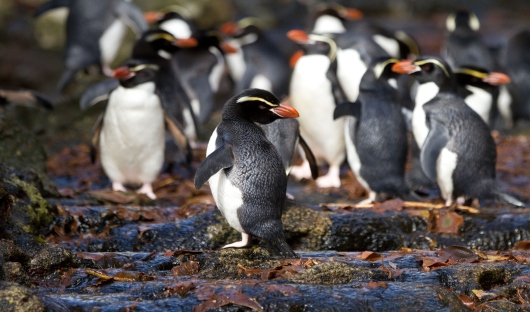
The northernmost of New Zealand’s Sub Antarctic islands, Snares Islands, is home to some of the most untouched, pristine wildlife and scenery in the world. Land mammals have never been introduced on the Snares, making it a busy breeding ground for local birds, marine mammals and invertebrates. Shearwaters, petrels and the endemic Snares Crested Penguins are abundant on the islands, along with four albatross species listed as breeding here. New Zealand fur seals breed on the shore and the New Zealand sea lions have been known to pop in for a visit. There are also several unique invertebrates including a species of weevil, that can only be found on the one species of plant in the whole world. Unique plants are in abundance on these islands, which takes up an approximate 840 acres.
The Auckland Islands
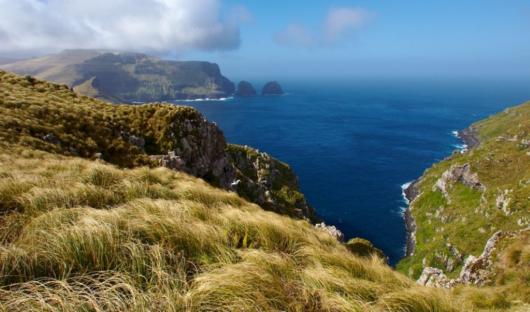
Reigning as the largest of New Zealand’s Sub Antarctic islands, its no wonder that the Auckland Islands are home to the richest flora, largest number of Sub Antarctic invertebrates and boast some of the rarest birds on earth. The area is made up by the largest island in the group, Auckland Island measuring 46,000 hectares and many other smaller islands, most notably due to size which is Adams Island measuring 10,000 hectares. Albatrosses, penguins and petrels are in abundance throughout the islands and most of the world’s population of white capped mollymawk’s breed on the island. There are a plethora of land birds with the endemic Auckland Island snipes, Auckland Island teal, Auckland rail and tomtit’s roaming the islands. Of all the islands in the Sub Antarctic region, the Auckland Islands have the largest number of invertebrates with over 280 insects record- 95 of which endemic. The same can be said of the flora of the islands, with once again the largest number of 196 native species recorded.
Campbell Island
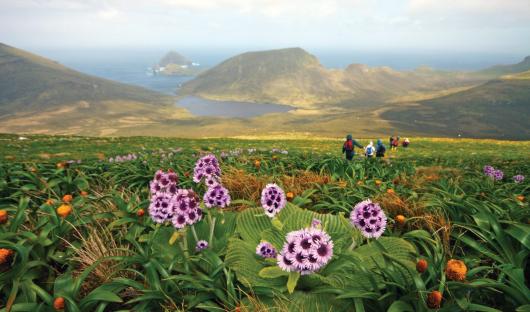
Although for 215 days of the year Campbell Island only receives one hour of sunshine per day, it should not be held against it. As the only permanently inhabited island of the Sub Antarctic region, Campbell Island has an interesting history. In 1895, the New Zealand government thought it was feasible to use the island as farmland and although it was tried and tested many farmers were unable to bear the remoteness of the island and left. The then mayor of Gisborne advertised the island as a place for whaling and for 7 years hunters came for the rare and now protected southern right whales. The only evidence now of the once farming land is the 1100 sheep which are restricted to certain areas of the island. The desolateness of the island is also proven by what the Guinness World Record’s has awarded as the “loneliest tree on earth”. But the baron land is made famous by the megaherbs that grow throughout the island during summer, which colours can be seen up to 2 kilometres from shore.
A SELECTION OF SHIPS
Sub Antarctic Island Itineraries
For more information on the ships and travel options we offer, call 1300 784 794 or email contact@antarcticatravelcentre.com.au


